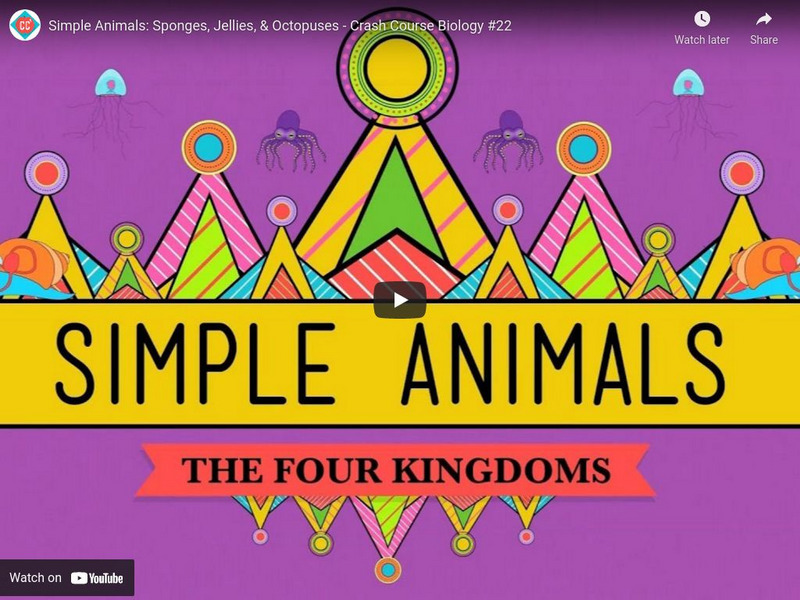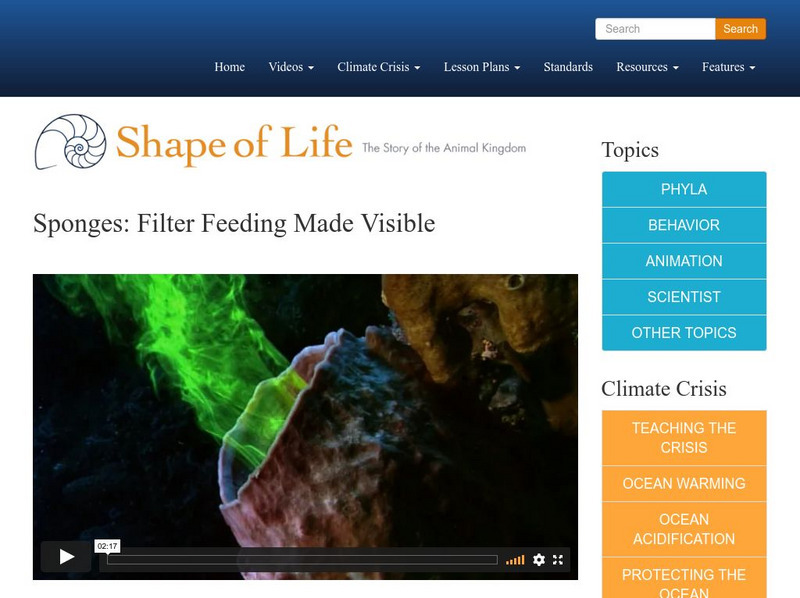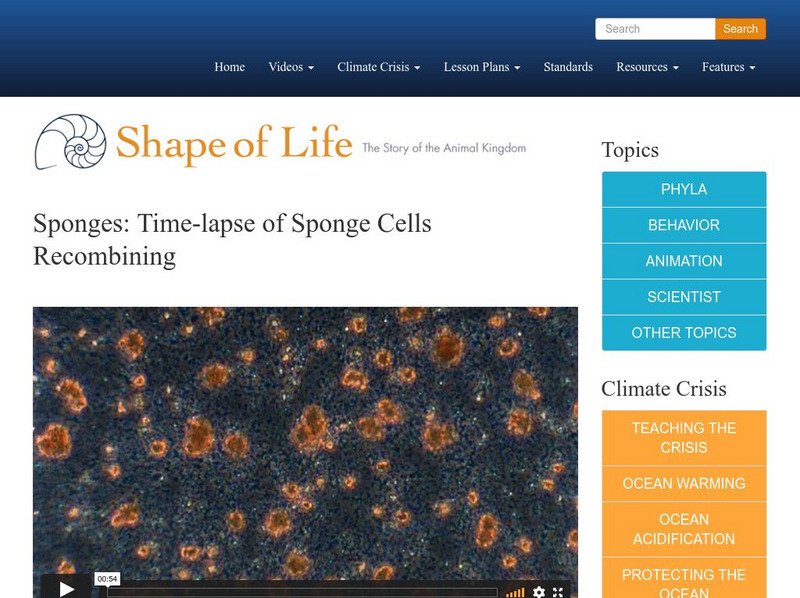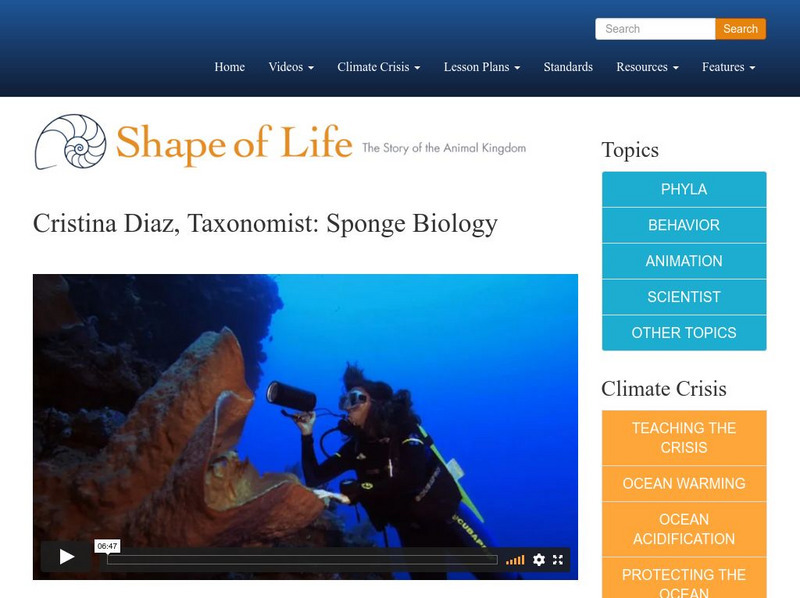PBS
Pbs Learning Media: Crash Course Biology: Simple Animals: Sponges, Jellies, & Octopuses
Hank introduces us to the least complex animals: beginning with sponges and finishing with the most complex molluscs, octopuses, and squid. We differentiate them by the number of tissue layers they have and by the complexity of those...
Crash Course
Crash Course Biology #22: Simple Animals Sponges, Jellies & Octopuses
Hank introduces us to the "simplest" of the animals, complexity-wise: beginning with sponges (whose very inclusion in the list as "animals" has been called into question because they are so simple) and finishing with the most complex...
Sea Studios Foundation
Shape of Life: Sponges: Origins
Learn about the first animal in this video. The ancient sponge appeared about 2.5 billion years ago coming in many sizes and shapes, sponge bodies are a loose assemblage of cells held together by a special protein called collagen which...
Sea Studios Foundation
Shape of Life: Sponges: Filter Feeding Made Visible
Watch as a florescent dye is injected next to a sponge and the sponge quickly pumps the dye through its body in this video. This demonstrates that sponges actively pump large quantities of water through their bodies in order to extract...
Sea Studios Foundation
Shape of Life: Sponges: Time Lapse of Sponge Cells Recombining
Did you know sponges are the only animals that if broken down to the level of their cells, can reassemble themselves? Watch this video as sponge is passed through a sieve to break apart its cells. Then watch as the cells recognize each...
Sea Studios Foundation
Shape of Life: Cristina Diaz: Taxonomist: Sponge Biology
Cristina Diaz describes her work as a taxonomist in this video. She dives in Indonesia to study her favorite animal, the sponge. Conducting an experiment to see how fast a sponge filters, she injects a colored dye into the water. The...
Sea Studios Foundation
Shape of Life: Sponge Animation: Spicules
Spicules are microscopic structures of hard crystal material with fantastic shapes unique to the different species of sponge. They are part of the skeleton that helps give the sponge its shape. [1:59]
Sea Studios Foundation
Shape of Life: Sponge Animation: Wild Ride Through a Sponge
Along with other microscopic organisms (dinoflagellates, diatoms, bacteria, etc.), we become a tiny particle and are pulled through the canals of a sponge. Along the way we learn that sponge cells catch food and make spicules(microscopic...







